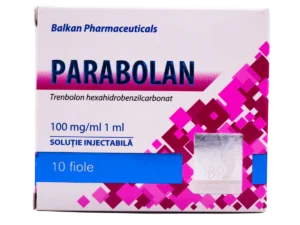
Introduction
Muscle pain, commonly known as delayed onset muscle soreness (DOMS), is a sensation of discomfort or pain experienced after engaging in intense physical exercise or training. This post-exercise muscle soreness typically occurs within 24 to 48 hours after the workout and can last up to several days. While muscle pain after training is a common occurrence, it can be an unwelcome side effect for individuals striving to achieve their fitness goals.
The underlying cause of muscle pain after training is believed to be the result of microscopic damage to muscle fibers during exercise. When we engage in strenuous physical activity, especially if it involves eccentric muscle contractions (lengthening of the muscle under tension), the muscle fibers experience microscopic tears. This microtrauma triggers an inflammatory response in the body, leading to the sensation of pain and discomfort.
The severity of muscle pain can vary depending on several factors, including the intensity and duration of the exercise, the individual’s fitness level, and the type of exercise performed. Activities that involve eccentric movements, such as downhill running or heavy weightlifting, tend to induce more significant muscle soreness compared to activities with concentric movements.
Understanding the mechanisms behind muscle pain after training is essential for individuals looking to optimize their workout routines and minimize discomfort. Additionally, proper management of post-exercise muscle soreness can help prevent injuries and allow for faster recovery, enabling individuals to maintain consistent training schedules.
In this article, we will delve deeper into the causes and effects of muscle pain after training. We will explore the physiological processes that contribute to DOMS, discuss strategies to alleviate discomfort, and provide practical recommendations to help individuals effectively manage and prevent muscle soreness. By gaining a comprehensive understanding of muscle pain after training, individuals can optimize their training regimens and enhance their overall fitness journey.
The Effects of Muscle Pain After Training
Muscle Soreness and Performance
Muscle pain after training can have significant effects on an individual’s performance and overall training experience. The discomfort and stiffness associated with DOMS can limit range of motion, decrease muscle strength, and impair coordination. These factors can hinder performance and make it challenging to maintain proper form during workouts. It is crucial to understand that experiencing muscle soreness does not necessarily indicate a lack of progress or a suboptimal workout. However, it is essential to manage and minimize its impact to ensure consistent training.
The Physiological Processes Behind Muscle Pain
DOMS is primarily caused by the eccentric contractions of muscles during exercise. When we perform exercises that involve lengthening of the muscle under tension, such as the lowering phase of a bicep curl or downhill running, the muscle fibers experience small tears. This microtrauma triggers an inflammatory response, leading to pain and soreness. Additionally, this process can result in the accumulation of metabolic waste products, such as lactic acid, further contributing to the discomfort.
Factors Influencing the Severity of Muscle Pain
Several factors influence the severity of muscle pain after training. The intensity and duration of the exercise play a significant role, with higher intensity and longer duration exercises often leading to more pronounced soreness. Additionally, an individual’s fitness level and training history can impact their susceptibility to muscle soreness. Beginners or individuals returning to exercise after a break may experience more significant soreness compared to trained athletes.
Managing and Alleviating Muscle Pain
While complete prevention of muscle pain after training may not be possible, there are strategies to manage and alleviate the discomfort. Here are some practical recommendations:
1. Gradual Progression:
Gradually increasing the intensity and duration of workouts allows the muscles to adapt and reduces the likelihood of severe soreness. Avoid sudden spikes in training volume or intensity.
2. Warm-up and Cool-down:
Proper warm-up exercises before training and cool-down stretches afterward can help prepare the muscles for exercise and reduce post-workout soreness.
3. Adequate Rest and Recovery:
Allowing the body sufficient time to recover between workouts is crucial for minimizing muscle soreness. Incorporate rest days into your training schedule to give your muscles time to repair and regenerate.
4. Hydration and Nutrition:
Staying hydrated and consuming a balanced diet rich in nutrients can support muscle recovery and reduce inflammation. Ensure adequate protein intake to promote muscle repair.
5. Massage and Foam Rolling:
Using massage techniques or foam rolling can help release tension in muscles, improve blood flow, and alleviate muscle soreness.
6. Non-Steroidal Anti-Inflammatory Drugs (NSAIDs):
In some cases, over-the-counter NSAIDs like ibuprofen can provide temporary relief from muscle pain. However, it is important to consult with a healthcare professional before using them regularly.
Conclusion
Muscle pain after training, also known as delayed onset muscle soreness (DOMS), is a common occurrence among individuals engaged in intense physical exercise. Understanding the underlying mechanisms and implementing strategies to manage and alleviate muscle soreness is essential for optimizing training performance and preventing injuries. By gradually progressing in workouts, incorporating warm-up and cool-down routines, allowing for adequate rest and recovery, maintaining proper hydration and nutrition, and utilizing techniques like massage and foam rolling, individuals can effectively manage and minimize the impact of muscle pain after training. Remember, while muscle soreness may be uncomfortable, it is a natural part of the training process, and with proper care, it can be overcome on the path to achieving fitness goals.
Practical Recommendations to Manage and Prevent Muscle Pain After Training
1. Gradual Progression:
Gradually increase the intensity and duration of your workouts to allow your muscles to adapt and minimize the risk of severe muscle soreness. Avoid sudden spikes in training volume or intensity, as this can lead to excessive muscle damage and prolonged recovery.
2. Warm-up and Cool-down:
Prioritize a proper warm-up routine before starting your training session. Dynamic stretches and light aerobic exercises can help increase blood flow to the muscles, improve flexibility, and reduce the risk of injury. Similarly, cool down with static stretches after your workout to promote muscle recovery and flexibility.
3. Rest and Recovery:
Make sure to incorporate rest days into your training schedule. Rest allows your muscles to repair and regenerate, reducing the likelihood of excessive soreness. Listen to your body and take additional rest days when needed, especially if you experience persistent muscle pain or fatigue.
4. Hydration and Nutrition:
Stay hydrated before, during, and after your workouts. Dehydration can exacerbate muscle soreness and hinder recovery. Additionally, ensure a well-balanced diet that provides sufficient nutrients to support muscle repair and reduce inflammation. Focus on consuming an adequate amount of protein to promote muscle recovery.
5. Massage and Foam Rolling:
Consider incorporating self-massage techniques or foam rolling into your post-workout routine. These practices can help release tension in the muscles, improve blood circulation, and reduce muscle soreness. Target the areas that feel particularly tight or tender.
6. Active Recovery:
Engage in low-intensity activities on your rest days to promote active recovery. Light exercises like walking, swimming, or gentle yoga can help increase blood flow to the muscles, facilitating the removal of metabolic waste products and reducing muscle soreness.
7. Proper Technique and Form:
Ensure that you are using correct technique and form during your workouts. Poor form can place unnecessary stress on certain muscles, leading to increased soreness. Seek guidance from a qualified fitness professional to learn proper exercise techniques and form.
8. Consider Supplements:
Certain supplements, such as branched-chain amino acids (BCAAs) or tart cherry juice, have been suggested to help reduce muscle soreness and aid in recovery. Consult with a healthcare professional or registered dietitian before incorporating any supplements into your routine.
9. Get Enough Sleep:
Adequate sleep is crucial for muscle recovery and overall well-being. Aim for 7-9 hours of quality sleep each night to promote optimal recovery from exercise-induced muscle soreness.
10. Consult a Healthcare Professional:
If you experience persistent or severe muscle pain after training, it is recommended to consult with a healthcare professional. They can assess your individual situation, provide personalized advice, and determine if further evaluation or treatment is necessary.
By implementing these practical recommendations, you can effectively manage and prevent muscle pain after training, allowing for a more enjoyable and productive fitness journey. Remember to listen to your body, prioritize recovery, and make adjustments to your routine as needed.






